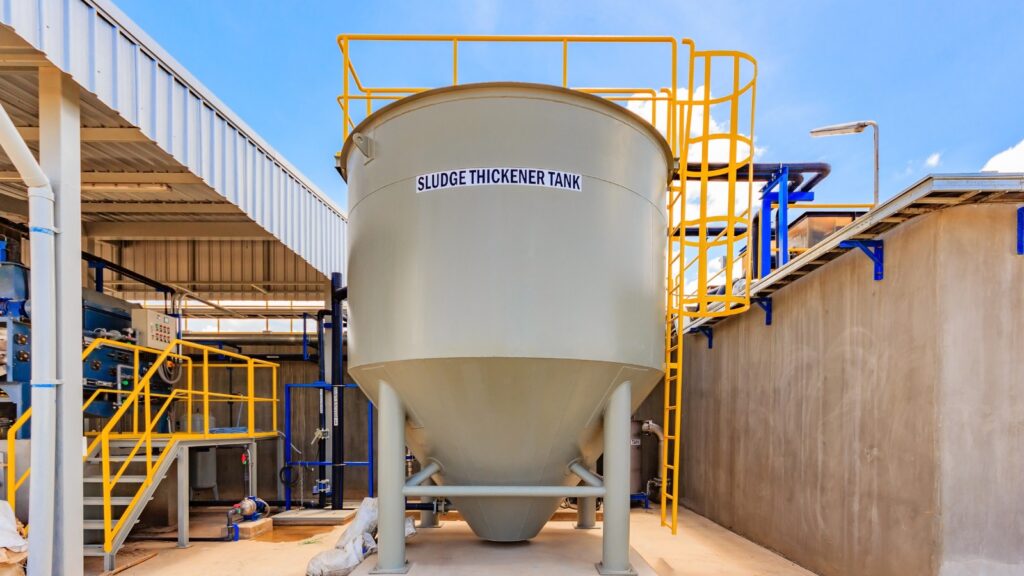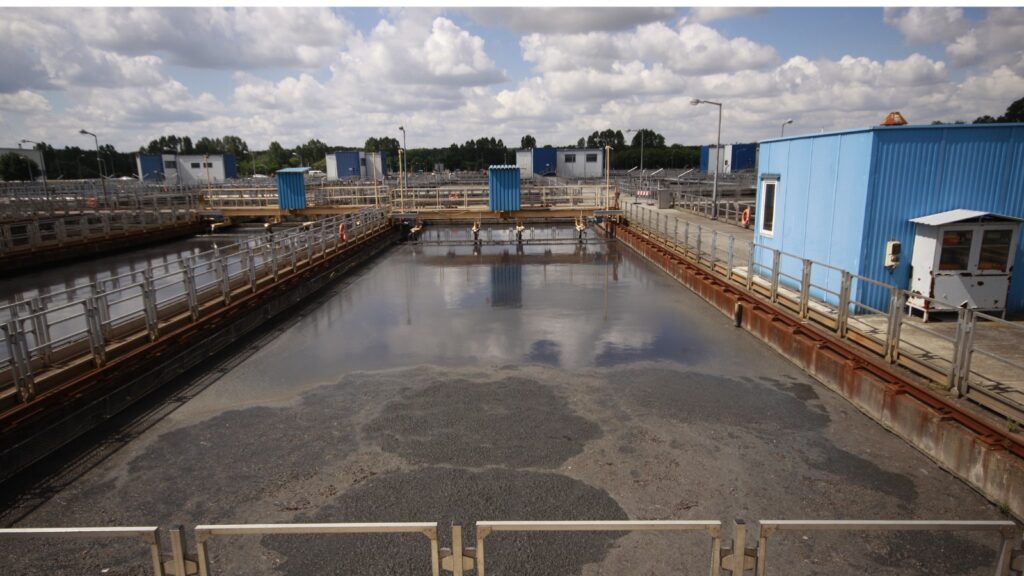Even though we consider waste a burden, there are many ways we can turn it into valuable byproducts.
Sludge in the wastewater industry is known as one of these main byproducts made during the wastewater or sewage treatment process.
If this sludge is managed systematically in the end the wastewater treatment plants have the ability to rely on self-made energy for up to 50% of their energy needs.
In this article, we will explore a sludge management process named Thermal Hydrolysis process, or in short THP which turns these wasteful sludge into golden eggs.
Sludge in the wastewater industry is known as one of these main byproducts made during the wastewater or sewage treatment process.
If this sludge is managed systematically in the end the wastewater treatment plants have the ability to rely on self-made energy for up to 50% of their energy needs.
In this article, we will explore a sludge management process named Thermal Hydrolysis process, or in short THP which turns these wasteful sludge into golden eggs.
What is THP in the Wastewater Industry?

Thermal hydrolysis is a technological process that has been revolutionising the Australian wastewater industry with its ability to produce useful output from sludge as a pre-treatment to anaerobic digestion.
This THP is a long process and during this production wastewater sludge and other moist organic waste are broken down quickly with the use of heat and high pressure created through technology.
At the end of this pressure-generating process, wastewater plants can produce a more biodegradable product that allows for better digestion and further processing.
When treating sewage sludge, thermal hydrolysis is used to carry out reactions at high pressures (between 6 and 9 bar) and temperatures (between 140 and 170 °C) without the presence of oxidants.
The wastewater industry was using this technology to improve the dewatering of sludge during the initial points, yet it has now become one of the best pre-treatment techniques for increasing the production of biogas for anaerobic digestion in the wastewater field.
This THP is a long process and during this production wastewater sludge and other moist organic waste are broken down quickly with the use of heat and high pressure created through technology.
At the end of this pressure-generating process, wastewater plants can produce a more biodegradable product that allows for better digestion and further processing.
When treating sewage sludge, thermal hydrolysis is used to carry out reactions at high pressures (between 6 and 9 bar) and temperatures (between 140 and 170 °C) without the presence of oxidants.
The wastewater industry was using this technology to improve the dewatering of sludge during the initial points, yet it has now become one of the best pre-treatment techniques for increasing the production of biogas for anaerobic digestion in the wastewater field.
Mechanism of Sludge THP

Sludge Preparation
In the initial stage of the Thermal Hydrolysis Process, raw sludge sourced from wastewater treatment undergoes preparatory steps.
Primarily, dewatering is employed to extract excess water content, concentrating the solids within the sludge for subsequent treatment.
This process includes the use of mechanical methods or technologies like centrifuges or filter presses to separate water from the sludge, reducing its moisture content and concentrating the solid matter.
This dewatering step optimises the sludge’s consistency, being a more efficient and effective treatment during the thermal hydrolysis phase, where organic compounds are broken down for enhanced biogas production and reduced sludge volume.
Primarily, dewatering is employed to extract excess water content, concentrating the solids within the sludge for subsequent treatment.
This process includes the use of mechanical methods or technologies like centrifuges or filter presses to separate water from the sludge, reducing its moisture content and concentrating the solid matter.
This dewatering step optimises the sludge’s consistency, being a more efficient and effective treatment during the thermal hydrolysis phase, where organic compounds are broken down for enhanced biogas production and reduced sludge volume.
Pressurisation
Within the thermal hydrolysis process, the sludge enters a specialised high-pressure vessel or reactor.
Here, the system pressurises the sludge, intensifying the pressure to elevate temperatures significantly.
This pressurisation serves a dual purpose; first, it raises the sludge’s temperature substantially, optimising conditions for subsequent hydrolysis reactions.
Second, it enhances the efficiency of these reactions by creating an environment conducive to breaking down complex organic compounds.
When subjecting the sludge to elevated pressure and temperature, this step primes the organic matter for thorough breakdown while ensuring a more effective conversion of complex molecules into simpler compounds during the thermal hydrolysis process.
Here, the system pressurises the sludge, intensifying the pressure to elevate temperatures significantly.
This pressurisation serves a dual purpose; first, it raises the sludge’s temperature substantially, optimising conditions for subsequent hydrolysis reactions.
Second, it enhances the efficiency of these reactions by creating an environment conducive to breaking down complex organic compounds.
When subjecting the sludge to elevated pressure and temperature, this step primes the organic matter for thorough breakdown while ensuring a more effective conversion of complex molecules into simpler compounds during the thermal hydrolysis process.
Heating Phase
During the heating phase in sludge thermal hydrolysis, the sludge undergoes exposure to elevated temperatures, usually within the range of 140°C to 180°C (284°F to 356°F) as we mentioned above.
This controlled heat application that is maintained for a predetermined duration, plays a pivotal role in degrading the sludge’s organic compounds and intricate molecules.
As the temperature rises, thermal energy disrupts the molecular structures, ensuring the breakdown of complex organic matter.
This process splits larger molecules into simpler constituents like volatile fatty acids and sugars.
The duration and intensity of heat exposure are calibrated to optimise the disintegration of organic components, ensuring efficient subsequent stages, such as anaerobic digestion, and maximising the production of biogas from the treated sludge at the further steps.
This controlled heat application that is maintained for a predetermined duration, plays a pivotal role in degrading the sludge’s organic compounds and intricate molecules.
As the temperature rises, thermal energy disrupts the molecular structures, ensuring the breakdown of complex organic matter.
This process splits larger molecules into simpler constituents like volatile fatty acids and sugars.
The duration and intensity of heat exposure are calibrated to optimise the disintegration of organic components, ensuring efficient subsequent stages, such as anaerobic digestion, and maximising the production of biogas from the treated sludge at the further steps.
Hydrolysis Reaction
Within the THP, the combination of elevated temperature and pressure triggers a transformative hydrolysis reaction in the sludge.
Under these conditions, complex organic molecules undergo a significant breakdown, yielding simpler compounds like volatile fatty acids, sugars, and smaller organic molecules.
This breakdown is a result of the high thermal energy disrupting molecular bonds, leading to the decomposition of complex structures into more manageable components.
The conversion of these compounds into simpler forms enhances the subsequent stages, particularly anaerobic digestion, as it primes the sludge for easier digestion by microorganisms.
This preparatory step optimises biogas production and accelerates the decomposition of organic matter within the sludge.
Under these conditions, complex organic molecules undergo a significant breakdown, yielding simpler compounds like volatile fatty acids, sugars, and smaller organic molecules.
This breakdown is a result of the high thermal energy disrupting molecular bonds, leading to the decomposition of complex structures into more manageable components.
The conversion of these compounds into simpler forms enhances the subsequent stages, particularly anaerobic digestion, as it primes the sludge for easier digestion by microorganisms.
This preparatory step optimises biogas production and accelerates the decomposition of organic matter within the sludge.
Cooling and Pressure Release
Following the heating phase in the THP, the treated sludge undergoes rapid cooling and pressure release.
This swift cooling process rapidly reduces the sludge’s temperature, halting further chemical reactions and simultaneously, the pressure is released, returning the environment to standard atmospheric conditions.
This cooling and pressure release step is crucial as it prevents any continued reactions within the sludge, ensuring safety during handling and subsequent stages of the treatment process.
When swiftly stabilising the sludge’s conditions, it allows for safe and efficient handling, storage, or further processing of the treated material.
This swift cooling process rapidly reduces the sludge’s temperature, halting further chemical reactions and simultaneously, the pressure is released, returning the environment to standard atmospheric conditions.
This cooling and pressure release step is crucial as it prevents any continued reactions within the sludge, ensuring safety during handling and subsequent stages of the treatment process.
When swiftly stabilising the sludge’s conditions, it allows for safe and efficient handling, storage, or further processing of the treated material.
Integration with Digestion
Following thermal hydrolysis, the treated sludge progresses into anaerobic digesters for integration and digestion.
Within these digesters, a consortium of microorganisms metabolises the remaining organic matter, a process facilitated by the thermally hydrolysed sludge.
This microbial activity leads to the breakdown of organic compounds into simpler forms, generating biogas primarily composed of methane and this biological breakdown further stabilises the sludge, reducing its volume and pathogen content.
The integration into anaerobic digesters completes the treatment cycle, maximising biogas production while rendering the sludge more manageable for disposal or reuse, aligning with sustainable waste management practices in wastewater treatment facilities.
Within these digesters, a consortium of microorganisms metabolises the remaining organic matter, a process facilitated by the thermally hydrolysed sludge.
This microbial activity leads to the breakdown of organic compounds into simpler forms, generating biogas primarily composed of methane and this biological breakdown further stabilises the sludge, reducing its volume and pathogen content.
The integration into anaerobic digesters completes the treatment cycle, maximising biogas production while rendering the sludge more manageable for disposal or reuse, aligning with sustainable waste management practices in wastewater treatment facilities.
Biogas Harvesting
Within the digestion phase of the Thermal Hydrolysis Process, the biogas generated is harvested and repurposed as a valuable energy source.
This biogas, primarily composed of methane, is captured and utilised within the treatment plant and also it serves as a renewable and sustainable energy reservoir, employed for heating purposes or harnessed in electricity generation.
This utilisation of biogas not only reduces reliance on traditional energy sources but also exemplifies a sustainable approach by repurposing waste by-products to fuel essential operations within the treatment facility, contributing significantly to its overall energy efficiency and environmental sustainability.
This biogas, primarily composed of methane, is captured and utilised within the treatment plant and also it serves as a renewable and sustainable energy reservoir, employed for heating purposes or harnessed in electricity generation.
This utilisation of biogas not only reduces reliance on traditional energy sources but also exemplifies a sustainable approach by repurposing waste by-products to fuel essential operations within the treatment facility, contributing significantly to its overall energy efficiency and environmental sustainability.
Why Opting for THP in the Wastewater Industry?

Saving Cost
Implementing the sludge THP in wastewater treatment plants offers some impressive cost-saving benefits.
When efficiently breaking down organic matter in sludge, THP accelerates anaerobic digestion, enhancing biogas production.
This generated biogas, basically methane, serves as an on-site renewable energy source and utilising biogas for heating or electricity reduces reliance on external energy providers, slashing operational expenses.
When efficiently breaking down organic matter in sludge, THP accelerates anaerobic digestion, enhancing biogas production.
This generated biogas, basically methane, serves as an on-site renewable energy source and utilising biogas for heating or electricity reduces reliance on external energy providers, slashing operational expenses.
Reliance of Own Energy Production
When accelerating the breakdown of organic matter in sludge, THP amplifies biogas output during anaerobic digestion as we mentioned before and this biogas, predominantly methane, serves as an internal energy reservoir, reducing dependency on external energy sources.
Utilising biogas for heating or electricity generation within the facility elevates self-sufficiency, mitigating the reliance on grid-based electricity or other fossil fuel-driven systems which provides high-levels of reliance on them.
Utilising biogas for heating or electricity generation within the facility elevates self-sufficiency, mitigating the reliance on grid-based electricity or other fossil fuel-driven systems which provides high-levels of reliance on them.
Good Quality Biosolids
THP in wastewater treatment facilities results in the production of high-quality biosolids ideal for fertilisers and its efficient breakdown of organic matter transforms sludge into a more stabilised and sanitised form, reducing pathogens and enhancing its nutrient content.
These biosolids undergo further treatment to meet strict quality standards and these nutrient-rich biosolids serve as valuable organic fertilisers, promoting soil health and crop growth.
These biosolids undergo further treatment to meet strict quality standards and these nutrient-rich biosolids serve as valuable organic fertilisers, promoting soil health and crop growth.
Expediting Growth with Innovation

As you can witness, every dark cloud has a silver line in a complex industry like wastewater as well.
This proves that we have the potential to turn waste into useful byproducts if we implement the right strategies in the right way as the wastewater industry produces fertilisers and biogas from sludge.
The key is the right eye for a suitable match.
This proves that we have the potential to turn waste into useful byproducts if we implement the right strategies in the right way as the wastewater industry produces fertilisers and biogas from sludge.
The key is the right eye for a suitable match.







